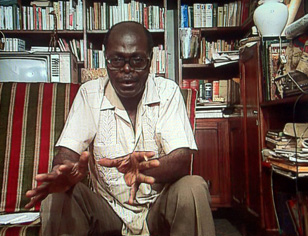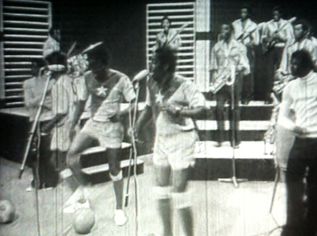Livier Lichen / V.A.: "Rumba"
- Gerald Van Waes
- Oct 2, 2016
- 2 min read

Zaradoc Livier Lichen : Rumba -cst-dvdr- (CO,1992)***'
This is the first documentary I could find about the subject. The editing is only in French, but I understood enough to tell you what is shown and said in in it. The first half pretty well goes into the historical rumba first. Sylvain Bemba gives us a very good explanation. He explains how slaves from the Congo/Angola region were brought to Cuba where they expressed their kind of belly dance-based dances with folklorist rhythms. These dances were demonstrated at the Chicago World Exhibition in 1932, and brought from here to Europe for further cultivation before they were returned to Congo with the Europeans. They arrived and stayed in an urban context, where it was a kind of “palace of the poor”, an expression of the poor working class wherein they exhibited their dreams. The West Africans who went to Congo as well took with them the Highlife style. Together with other folkloristic elements, the Congo rumba developed to a new sort of potpourri.
The documentary questioned guitarist Antoine Wendo shortly, who sings a rumba song with acoustic guitar and feels happy with his life.
Then the documentary shows us groups of importance with lots of old television fragments, most of them in black and white, with bands like African jazz and OK Jazz. They show the importance of the music for the purpose of dancing. They say that it was not just music, but also a bit of spectacle, where some people danced, others simply watched the show: both parts of the performance are equally important. There has to be physical movement too. Very funny is the illustration of it with a band playing with a football on stage. Also nice to see is the rare colour TV fragment with a few woman dancers on stage.
Until here, the documentary was pretty essential enough. Then it goes to the villages, mostly Brazaville to show how the local bands and the people behaving to it. The most illustrative fragment was a band playing with electric thumb piano called Nsanga-Lubango, which sounds like an earlier version of Konono n°1, proving that something like the latter happened before. Some other band says they introduced the inclusion of drums. In all these new fragments here it is getting a bit fragmentary. A few people talk about the importance and significance of their clothing/dress when they go out on the music. Then documentary strangely concludes with some fragments where some people were really get drunk and show how much they were trying to get bodily closer to the real act of getting a chick on the hook, as if in the end this remains an essential necessary part of the rumba, even though we know anything can be taken and played with it loosely at the same time.































Comments